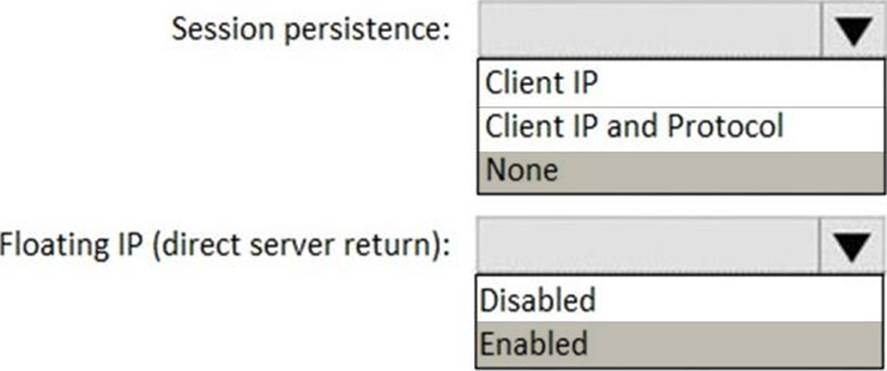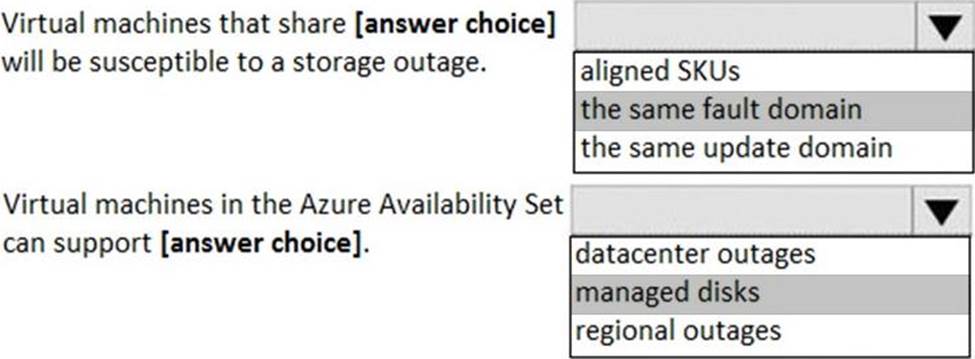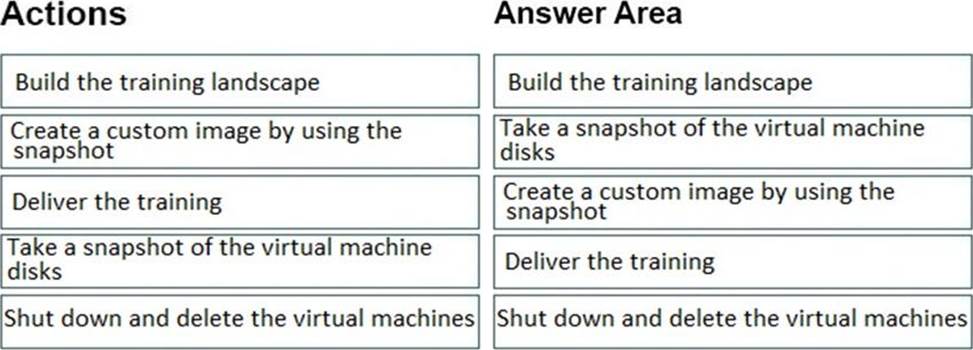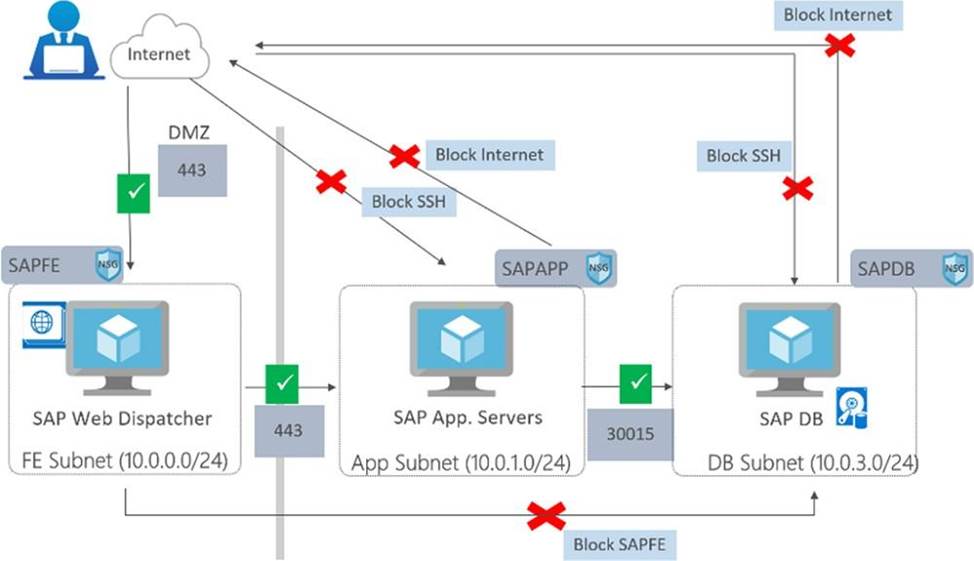Microsoft AZ-120 Planning and Administering Microsoft Azure for SAP Workloads Online Training
Microsoft AZ-120 Online Training
The questions for AZ-120 were last updated at Oct 27,2025.
- Exam Code: AZ-120
- Exam Name: Planning and Administering Microsoft Azure for SAP Workloads
- Certification Provider: Microsoft
- Latest update: Oct 27,2025
HOTSPOT
You plan to deploy a highly available ASCS instance to SUSE Linux Enterprise Server (SLES) virtual machines in Azure.
You are configuring an internal Azure Standard Load Balancer for the ASCS instance.
How should you configure the internal Standard Load Balancer? To answer, select the appropriate options in the answer area. NOTE: Each correct selection is worth one point.
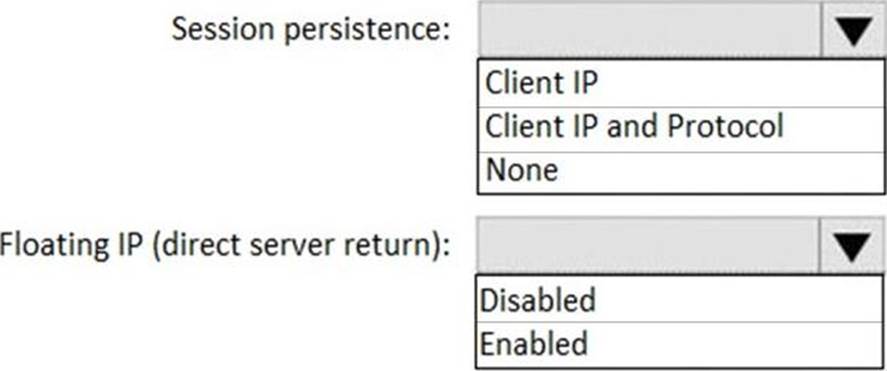
You have an SAP environment on Azure that uses multiple subscriptions.
To meet GDPR requirements, you need to ensure that virtual machines are deployed only to the West Europe and North Europe Azure regions.
Which Azure components should you use?
- A . Azure resource locks and the Compliance admin center
- B . Azure resource groups and role-based access control (RBAC)
- C . Azure management groups and Azure Policy
- D . Azure Security Center and Azure Active Directory (Azure AD) groups
HOTSPOT
You have an Azure Availability Set that is configured as shown in the following exhibit.

Use the drop-down menus to select the answer choice that completes each statement based on the information presented in the graphic. NOTE: Each correct selection is worth one point.
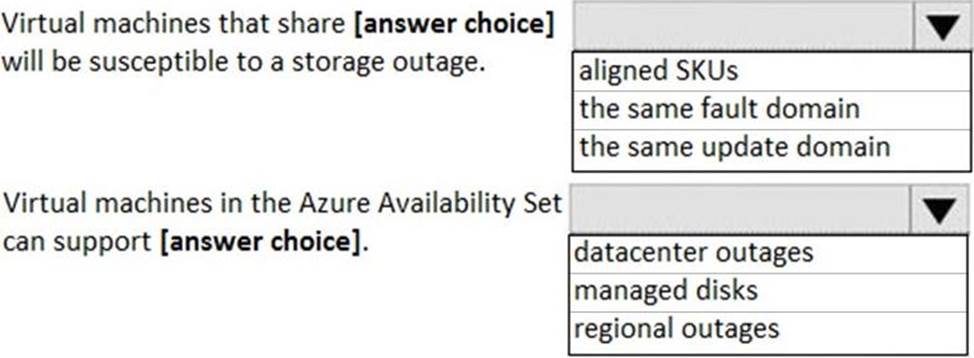
You plan to deploy an SAP environment on Azure that will use Azure Availability Zones.
Which load balancing solution supports the deployment?
- A . Azure Basic Load Balancer
- B . Azure Standard Load Balancer
- C . Azure Application Gateway v1 SKU
You have an Azure subscription.
Your company has an SAP environment that runs on SUSE Linux Enterprise Server (SLES) servers and
SAP HANA. The environment has a primary site and a disaster recovery site. Disaster recovery is based on SAP HANA system replication. The SAP ERP environment is 4 TB and has a projected growth of 5% per month.
The company has an uptime Service Level Agreement (SLA) of 99.99%, a maximum recovery time objective (RTO) of four hours, and a recovery point objective (RPO) of 10 minutes.
You plan to migrate to Azure.
You need to design an SAP landscape for the company.
Which options meet the company’s requirements?
- A . Azure virtual machines and SLES for SAP application servers SAP HANA on Azure (Large Instances) that uses SAP HANA system replication for high availability and disaster recovery
- B . ASCS/ERS and SLES clustering that uses the Pacemaker fence agent SAP application servers deployed to an Azure Availability Zone SAP HANA on Azure (Large Instances) that uses SAP HANA system replication for database high availability and disaster recovery
- C . SAP application instances deployed to an Azure Availability Set SAP HANA on Azure (Large Instances) that uses SAP HANA system replication for database high availability and disaster recovery
- D . ASCS/ERS and SLES clustering that uses the Azure fence agent SAP application servers deployed to an Azure Availability Set SAP HANA on Azure (Large Instances) that uses SAP HANA system replication for database high availability and disaster recovery
Note: This question is part of a series of questions that present the same scenario. Each question in the series contains a unique solution that might meet the stated goals. Some question sets might have more than one correct solution, while others might not have a correct solution.
After you answer a question in this section, you will NOT be able to return to it. As a result, these questions will not appear in the review screen.
You deploy SAP HANA on Azure (Large Instances).
You need to back up the SAP HANA database to Azure.
Solution: You configure DB13 to back up directly to a local disk.
Does this meet the goal?
- A . Yes
- B . No
DRAG DROP
You have a large and complex SAP environment on Azure.
You are designing a training landscape that will be used 10 times a year.
You need to recommend a solution to create the training landscape.
The solution must meet the following requirements:
✑ Minimize the effort to build the training landscape.
✑ Minimize costs.
In which order should you recommend the actions be performed for the first training session? To answer, move all actions from the list of actions to the answer area and arrange them in the correct order.
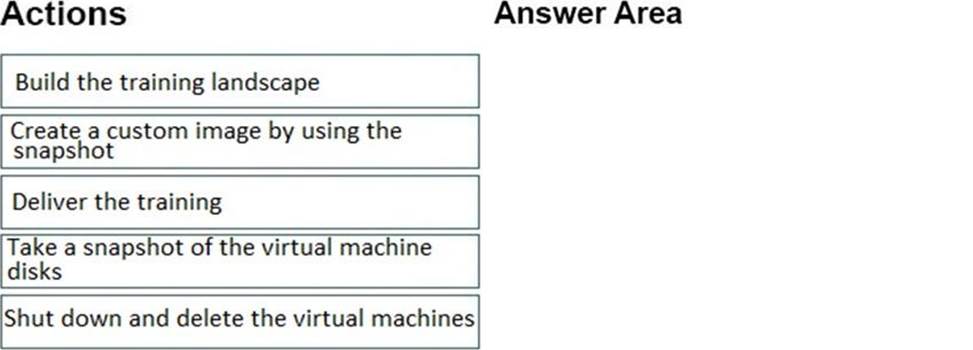
You plan to deploy an SAP environment on Azure.
During a bandwidth assessment, you identify that connectivity between Azure and an on-premises datacenter requires up to 5 Gbps.
You need to identify which connectivity method you must implement to meet the bandwidth requirement. The solution must minimize costs.
Which connectivity method should you identify?
- A . an ExpressRoute connection
- B . an Azure site-to-site VPN that is route-based
- C . an Azure site-to-site VPN that is policy-based
- D . Global VNet peering
You plan to migrate an SAP environment to Azure.
You need to create a design to facilitate end-user access to SAP applications over the Internet, while restricting user access to the virtual machines of the SAP application servers.
What should you include in the design?
- A . Configure a public IP address for each SAP application server
- B . Deploy an internal Azure Standard Load Balancer for incoming connections
- C . Use an SAP Web Dispatcher to route all incoming connections
- D . Configure point-to-site VPN connections for each user
You have an Azure subscription.
You deploy Active Directory domain controllers to Azure virtual machines.
You plan to deploy Azure for SAP workloads.
You plan to segregate the domain controllers from the SAP systems by using different virtual networks.
You need to recommend a solution to connect the virtual networks. The solution must minimize costs.
What should you recommend?
- A . a site-to-site VPN
- B . virtual network peering
- C . user-defined routing
- D . ExpressRoute
Latest AZ-120 Dumps Valid Version with 125 Q&As
Latest And Valid Q&A | Instant Download | Once Fail, Full Refund

